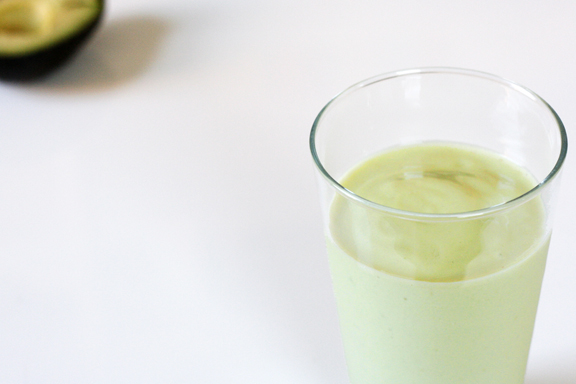
My mom is everyone’s mom. There’s something about her that makes people warm to her very quickly, whether young or old, stranger or family. This makes her role as a pastor’s wife all the more fitting. Within just moments of knowing her, people find themselves telling her their innermost thoughts. If you mention something in passing — an interview, a life decision, a husband out of town — without any conscious effort, she remembers and knows just the right moment to call you and just the right things to say and do. Even now, when I’m out shopping and can’t remember my husband’s clothing size, I’ll call my mom. She remembers these things. She remembers everyone’s things. And in all the ways that she is everyone’s mom, I’m thankful most of all that she is mine. And Becca’s. :)
For mother’s day, I thought I’d post a smoothie recipe or two, since smoothies have become my mom’s specialty in recent years. There’s something you should know at the outset, though: Many of my mom’s smoothies are questionable smoothies. They are smoothies in quotation marks. They’re what you might call “green smoothies.”
She started making these concoctions maybe five or six years ago and tried to convince Becca’s now brother-in-law, who was maybe 7 or so then, to drink them by calling them “smoothies.” Let me just say that one of the ingredients is bitter melon.
Most recently, Mom has moved on to more sophisticated green smoothies. When I visited my parents in Portland last month, she showed me what’s called the “fairy drink” that she got from a Chinese health book and now makes for my dad. It involves bitter melon, swiss chard, beets, carrots, apples, cucumbers, lemons, and — in accordance with the principles of Chinese medicine, to balance out the “coolness” of the vegetables, some “hot” spices like fenugreek, cumin, and cinnamon. When my husband tasted it, he declared, with much disturbance, that it was bitter, sour, and spicy all at once. When I tasted it, I said it reminded me of curry and seemed like something you might want to pour over bismati rice. Nevertheless, my dad faithfully drinks this stuff every day. Leave it to my mom to make sure he gets all his vitamins through raw, whole foods.
So here, in full form, is my mom’s infamous “fairy drink,” adapted from her Chinese health book. Make and taste at your own risk! For something a little more palatable, please scroll down to the avocado recipe. :)

Mom’s Infamous “Fairy Drink”
Adapted from her Chinese health book
Makes too many servings :)
This green smoothie requires a high-powered blender that has juicing capabilities.
1 beet, including leaves & stem, but no peel
3 carrots, including peel, but ends trimmed
2 cucumbers, including peel, but ends trimmed
1 large green apple, including peel, but cored
bitter melon, including seeds, but ends trimmed
2 lemons — including seeds and white pith, but peeled
4 pieces chard, including stem
6 slices ginger, about 1/4 inch thin
6 cloves garlic, peeled
5-6 Tbsp goji berries (also known as wolfberries)
1/2 fennel, including leaves and stem (optional)
handful of blueberries (optional)
4 tsp of cumin, fenugreek, cinnamon, and cloves (1 tsp each)
Clean, trim, peel, or chop all vegetables accordingly. Blend in batches in blender until thick, smoothie-like consistency is reached.

If the fairy drink is a little too scary for you, let me leave you with an old family favorite — the avocado smoothie. I like to have mixed fruit smoothies for breakfast every day during warmer months, and with avocados starting to go on sale, I’ve been making avocado smoothies as a mid-afternoon snack. American friends of mine usually think this is an odd smoothie flavor, maybe because avocados aren’t normally a dessert ingredient in American cuisine. But rest assured that this is a fairly standard fruit smoothie and definitely my flavor of choice. The Chinese call avocados “butter fruit,” and in Vietnamese, avocado (bo) is pronounced like the French beurre, for “butter.” So blend butter fruit with some condensed milk, and you’ve got yourself a rich, creamy drink.
Avocado Smoothie (Sinh To Bo)
Makes 1 serving
Traditionally, sinh to, or Vietnamese smoothies are made with condensed milk as the sweetener. My family also likes to make ice cubes out of milk to create a creamier drink.
1/2 avocado
3 Tbsp of sugar or condensed milk
6 frozen milk cubes
3/4 – 1 cup of milk
Put all ingredients into a blender and blend until smooth. Use less milk for a thicker, smoothie-like consistency or more milk for a frothy, milkshake-like consistency.


















Connect with us